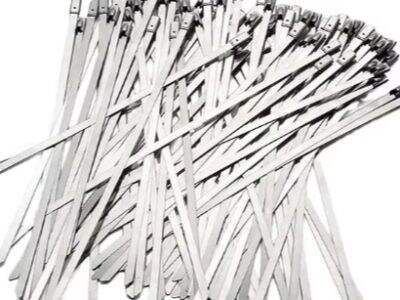Ever wonder how cables and wires do not get displaced when exposed to excessive heat? It's not magic. That is where high temperature cable ties are useful. These fancy-links are very critical for high-temperature, high-exposure circumstances. Now, let us take an in-depth look at the different types of high-temperature Nylon Cable Ties and why these come so much in handy.
Why They Are Important
Everyone finds the high temperature cable ties by NBSZS very useful, especially in factories and construction sites which require operation with high heat and electrical components. These are ultimate for wearing at high temperature, which can go as high as 1000°F (538°C). Which means they aren't going to melt or crack even under the worst temperature conditions. They're also resistant to chemicals, radiation and sunlight that can destroy regular ties. Drying out could also cause so much loosening that cables and wires can come loose, break and cause operational problems or pose a safety hazard. Which is the reason why so many industries must use high temperature stainless zip ties.
High Temperature Cable Tie Types
One of many available high temp cable ties types designed for specific applications. Here are some common types:
Metal Strap — This is a strong-metal wearing strap, typically a stainless-steel strap. Their ideal use is for the heaviest work that requires a lot of force and they are rust resistant. Metal ties are also good for auction heavy duty cables.
Fiberglass Ties — These are constructed from a unique composite of durable fiberglass. They performs excellent under heat, fire and chemicals and other circumstances. They are ideal in areas where normal ties may falter.
Kevlar: These ties are made of super strong Kevlar fibers. Ideal for high-tech industries such as aerospace and defense, they can withstand extreme heat and pressure. These are known for their strength and reliability
Ceramic ties - Made of ceramic material which gives resistance against heat and chemicals to some extent. They are typically used where other materials may fail.
Choosing the Right Tie
There are several factors that need to be considered when selecting a high temperature cable ties. Below you will see some tricks that can help you select the correct one:
Temperature range – Ensure that the selected tie is capable of reaching the desired highest heat. You want to make sure that it will not melt, breakdown when it gets warm.
Chemical resistance — Select a tie that can withstand exposure to any chemicals with which it may come into contact. This will help ensure that the knot is more durable and will hold everything in place.
Strength – Know the weight the cable tie will be supporting. Choose a tie that has a rating to support the weight For example, If it is going to hold heavy cables.
In addition, look for a tie that is convenient to fit. Keep an eye out for features that ease the locking and releasing of the tie whenever necessary.

 AR
AR
 BG
BG
 FR
FR
 DE
DE
 EL
EL
 IT
IT
 JA
JA
 KO
KO
 PL
PL
 PT
PT
 RU
RU
 ES
ES
 UK
UK
 VI
VI
 TH
TH
 TR
TR
 BE
BE
 LA
LA


